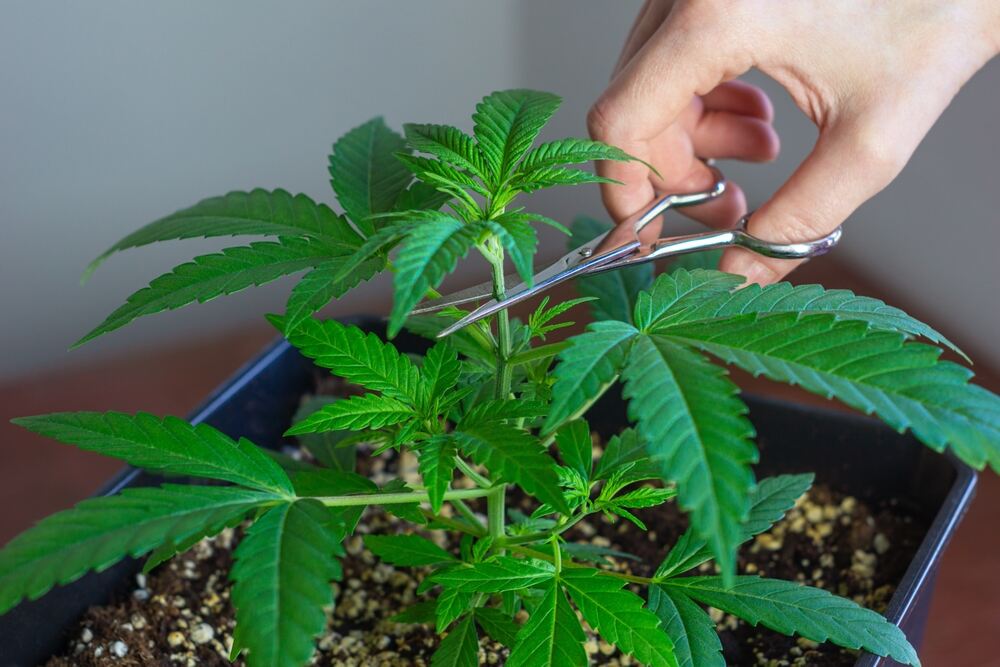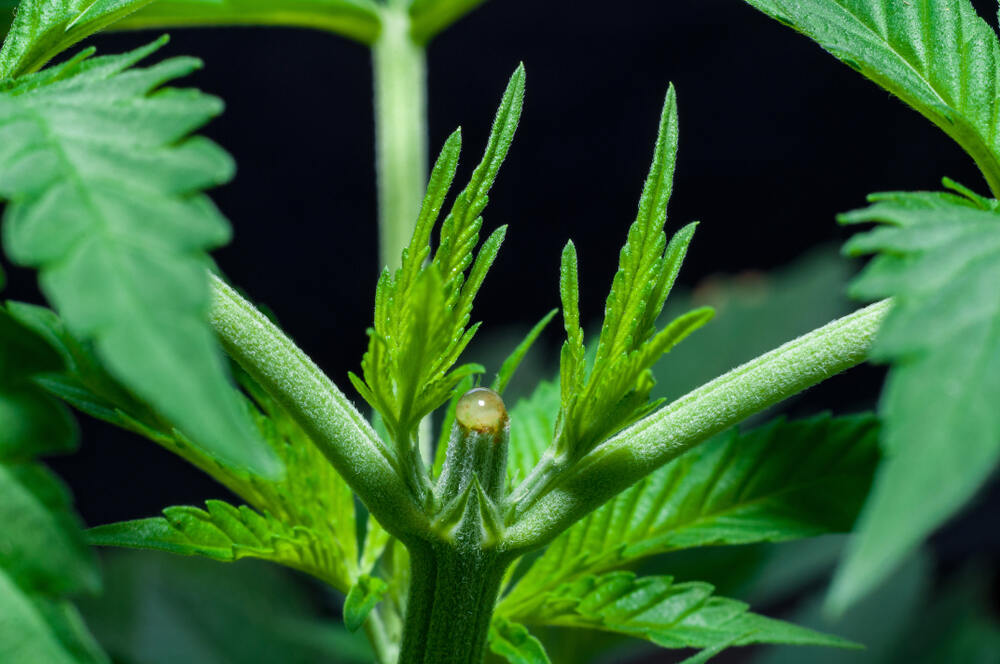The Best Fluffy Pancakes recipe you will fall in love with. Full of tips and tricks to help you make the best pancakes.

How to Top Cannabis Plants
If you’re looking to maximize your cannabis yield and keep your plants from growing too tall, topping is an essential technique. It encourages your plant to grow bushier rather than upwards, increasing the number of bud sites and giving you a much better harvest. In this guide, I’ll walk you through everything you need to learn about topping cannabis—from why it’s important to how to do it step by step. Let’s get started!
What is Topping Cannabis?
Topping is a simple pruning method that involves cutting off the top growth of your plant. This stops the plant from focusing energy on growing taller and instead redirects it to the side branches, creating more colas (flowering sites).

Definition and Purpose of Topping
Topping is the process of cutting the top growth node of a cannabis plant to stimulate lateral growth instead of vertical. The purpose? To increase your yields by encouraging the plant to develop more bud sites. Think of it as giving your plant a haircut that makes it bush out and grow more evenly.
Benefits of Topping for Indoor and Outdoor Growers
Whether you’re growing indoors or outdoors, topping provides a ton of benefits. Indoors, it helps control the height of your plants, which can be crucial for managing space and ensuring even light distribution. For outdoor growers, topping helps keep those tall plants in check while also promoting better airflow and bigger yields. Topping also keeps your cannabis plant healthier and more manageable.
Topping vs. Fimming: What’s the Difference?
Topping and fimming are both high-stress training techniques, but they’re not quite the same. With topping, you make a clean cut to remove the entire top growth, encouraging two new main branches to form. Fimming, on the other hand, is a bit more of a “guesswork” cut that removes about 75% of the growth tip, leading to the formation of multiple branches (usually four or more). While fimming can increase yields, it’s less precise than topping, and you’re more likely to make mistakes. Personally, I find topping to be the more reliable option.
When to Top Cannabis Plants
Timing is key with topping, and it’s all about catching your plant during the vegetative stage when it can handle stress and bounce back.
Best Time to Top During the Vegetative Stage
The best time to top your plant is when it’s about 4-6 weeks into the vegetative stage. By this point, your plant is robust and has enough nodes to recover quickly. Don’t wait too long or your plant might be too far along in its growth cycle to benefit from the cutting.
How to Identify the Right Node for Topping
To find the right spot to make your cut, count the nodes on your plant. Once you’ve got 4-5 nodes, you’re ready. You’ll want to make your cut just above the fifth node. This technique encourages the plant to spread its energy across multiple branches, helping to increase your yield.
Why You Shouldn’t Top in the Flowering Stage
Topping is strictly a vegetative stage activity. Once your cannabis plant enters the flowering stage, topping will only stress the plant out and potentially reduce your final yield. The plant is busy forming buds at this point, and any pruning or cutting should be avoided. Stick to training and topping during the vegetative phase for the best results.
How to Top Cannabis Plants Step-by-Step
Now that you’ve got the timing down, let’s get into how you actually perform topping. It’s not as hard as you might think, and with the right tools and a steady hand, you’ll have it down in no time.
Tools You’ll Need for Topping
Here’s what you’ll need:
- Sharp scissors or pruning shears (make sure they’re clean and sterilized)
- Rubbing alcohol (for disinfecting your tools)
- Optional: Pruning sealers (to prevent infections from entering the cut)
Having sharp, clean tools is crucial to ensure you don’t harm your plant during the cutting process.
Step 1: Clean and Disinfect Your Equipment
Start by cleaning your tools with rubbing alcohol to prevent any potential infections from affecting your plant. Trust me, you don’t want to risk introducing bacteria after making a cut.
Step 2: Locate the Correct Node
Count from the base of the plant upwards and find the top of the 5th node. This is where you’ll want to make your cut to encourage the plant to grow outwards rather than upwards. Hold the stem steady between your fingers for extra precision.
Step 3: Make a Clean Cut
Using your sharp, disinfected scissors, make a clean cut just above the 5th node. This quick, decisive action ensures a healthy recovery for your plant and avoids any unnecessary damage.
Step 4: Post-Topping Care and Recovery
After topping, your plant will need a little extra care to recover from the stress. Keep an eye on it for the next few days, making sure it’s getting enough water and nutrients to fuel new growth. Within a week or two, you’ll start to see new branches forming where you made the cut.
Topping Multiple Times
You can top your plant more than once if it’s handling the stress well, but there’s a limit. Here’s how to make sure you’re not overdoing it.
How Often Can You Top Cannabis?
You can top your plant again after about 1-2 weeks, but don’t overdo it. Topping 2-3 times in a plant’s life cycle is enough to significantly increase your yields without overwhelming the plant.
How Long to Wait Between Toppings
Allow at least a week between toppings so your plant can fully recover before you stress it out again. Patience is key when it comes to cannabis pruning, so don’t rush it.
Topping for Maximum Yield: How Much is Too Much?
Topping too many times can result in a stressed-out plant that takes longer to recover. Stick to topping 2-3 times, and you’ll see an increase in yield without overloading your plant.
Common Mistakes to Avoid When Topping Cannabis
Even though topping is pretty simple, there are some common mistakes you’ll want to avoid.
Topping Too Early or Too Late
Timing is everything. Topping too early can stunt your plant’s growth, while topping too late can disrupt the flowering process. Make sure you’re doing it at the right stage in the vegetative phase for the best results.
Using Blunt Tools: How to Avoid Plant Stress
Blunt tools can cause ragged cuts that take longer to heal, stressing your plant more than necessary. Always use sharp, clean tools to make a clean cut and ensure a quicker recovery.
Ignoring Post-Topping Recovery Time
After topping, your plant needs time to heal. Ignoring recovery time can result in weak growth or even hermaphroditism, so be patient and give your plant time to bounce back before topping again.
FAQ
Does topping increase yield?
Yes, topping increases yields by creating more colas. This technique forces the plant to focus its energy on lateral growth, resulting in more bud sites.
Can you top autoflowers?
It’s possible, but not recommended for beginners. Autoflowers have a short vegetative stage, leaving little time for recovery.
How long does it take for a plant to recover after topping?
Recovery after topping takes about 1-2 weeks. During this time, watch for signs of new growth and adjust care as needed.
Can topping make cannabis plants hermaphrodites?
Excessive stress from topping or improper techniques can cause plants to become hermaphrodites, which can affect yield.
What should you do if you accidentally damage a plant while topping?
If you accidentally damage your plant, keep the cut clean and provide extra care to help it recover.
Topping cannabis plants is a simple yet effective technique to increase your yields and keep your plants manageable. By following this guide and giving your plants the care they need, you’ll be able to enjoy a bigger, better harvest. So grab your scissors, and happy growing!




